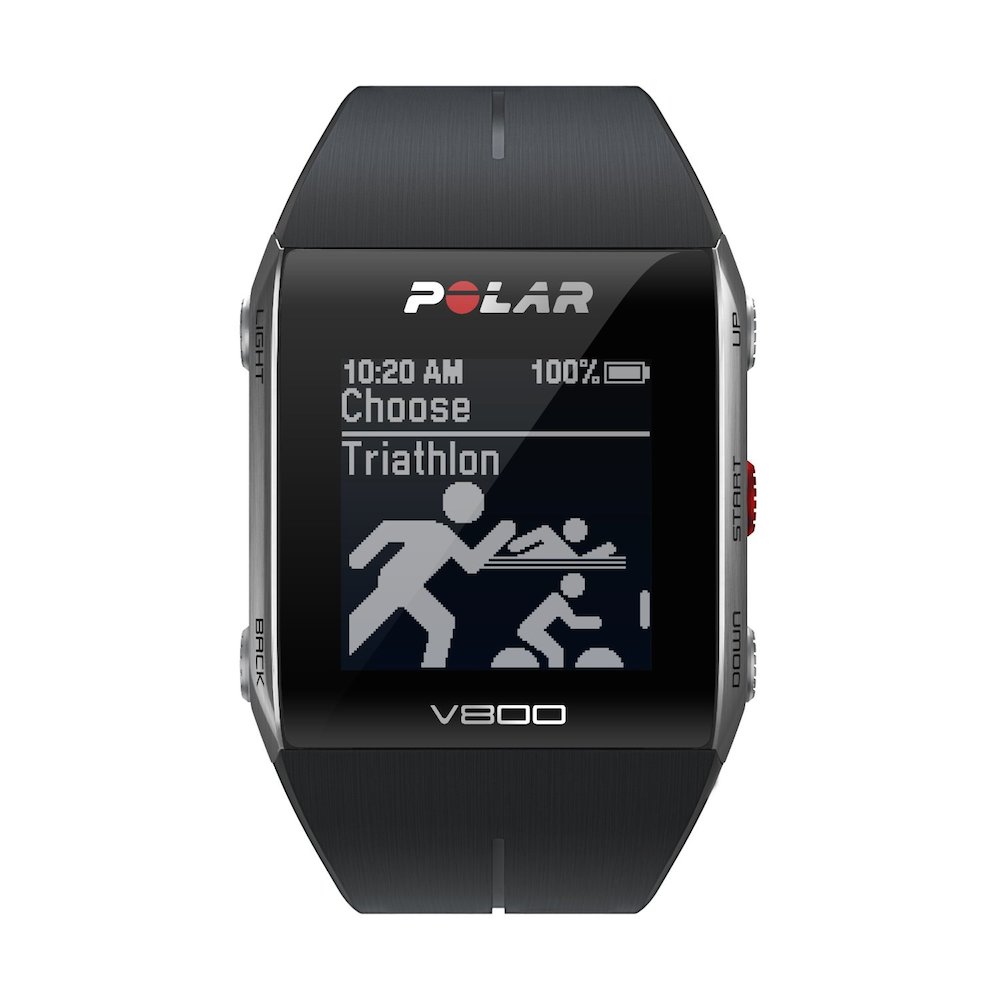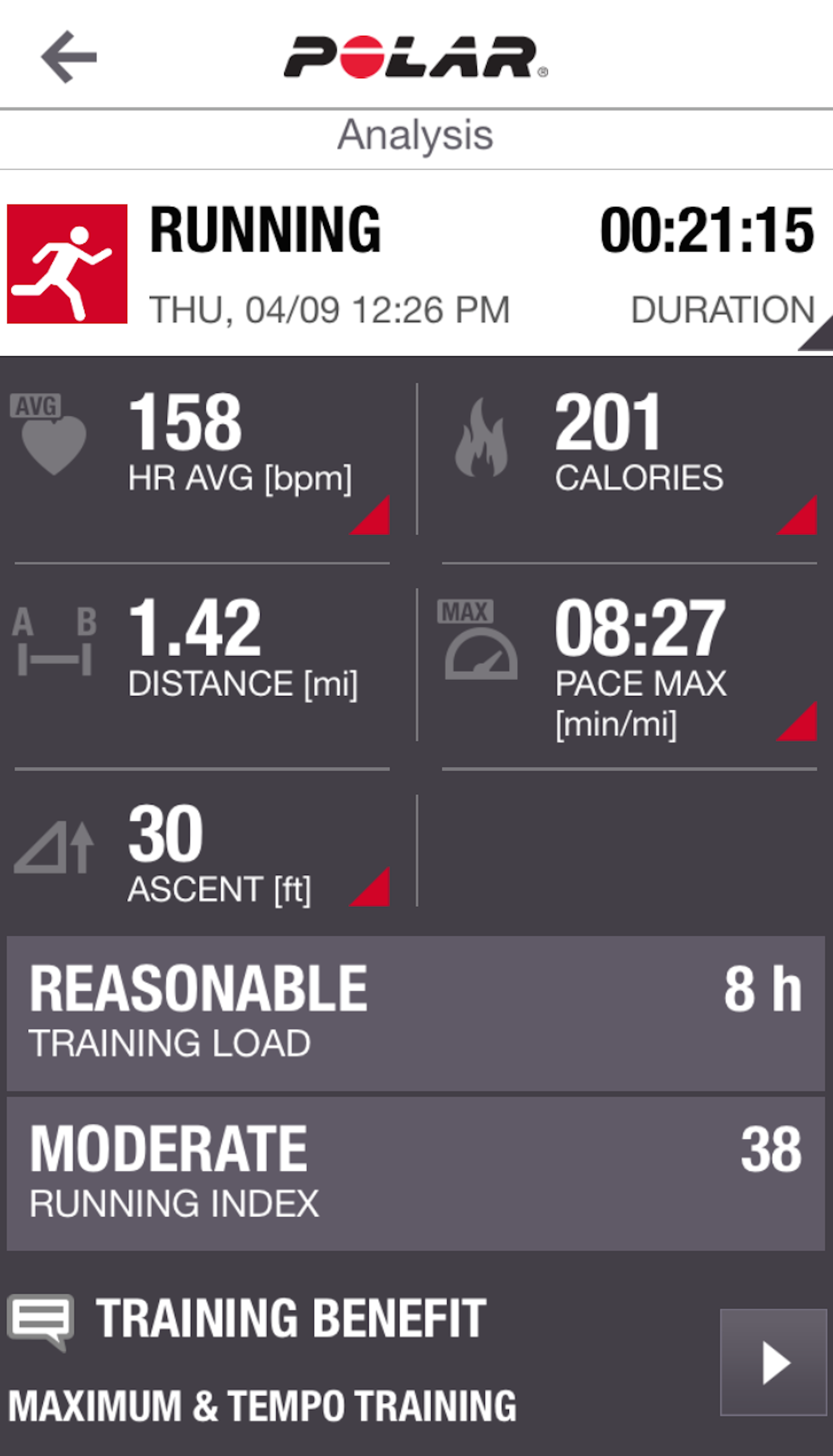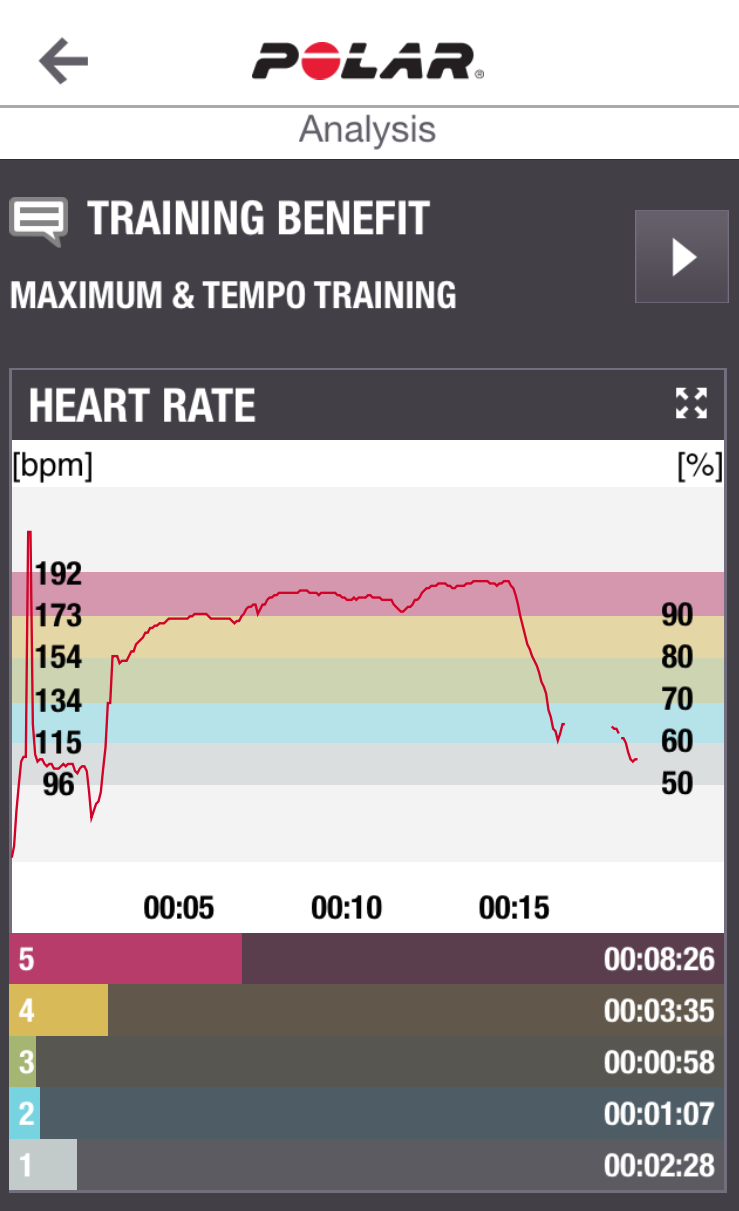Polar V800: GPS Watch Review

The Polar V800 is a GPS watch that tracks a wide variety of sports, from running and swimming to yoga, dance and CrossFit. The watch also tracks daily activity, including steps taken and calories burned.
Priced at $400, the Polar V800 is near the high end of the price range for multisport GPS watches. It's more expensive than the $299 TomTom Multi-Sport Cardio, but cheaper than the Garmin Forerunner 920XT, which sells for $490 on Amazon. Included in the V800's price is a heart rate monitor that tracks your pulse during workouts on land and in the water. I tested the V800 over the course of a month, bringing the watch with me on runs, bike rides and swims, and wearing it around the house while I went about my day. Here's what I found:
Overall rating: 7.5/10
The Polar V800 has comprehensive features that make it useful for any athlete who participates in more than one sport. It's also one of the only multisport GPS watches on the market that can monitor your heart rate underwater. [Best GPS Running Watches]
However, the V800's boxy design isn't comfortable for people with slender wrists. And if you're a city dweller, then you should know that the device can take a few minutes to pick up a GPS signal in areas with lots of tall buildings around.
Design/comfort: 6.5/10
The V800 comes in two colors: black with grey accents, and blue with red accents. These options are refreshingly discreet compared to the bright colors you'll find on both the Garmin Forerunner 920XT and the TomTom Multi-Sport Cardio. However, the V800 didn't fit comfortably on my wrist (owing to its boxy design), which meant I didn't want to keep it on all day to track my steps or calories burned. When I was working out, I had to fasten the band tightly on my wrist so that it wouldn't slide around on my arm.
The V800's display, or "training computer," is encased in stainless steel, and the watch face is made of Gorilla Glass (the same hardy, scratch-resistant material that covers newer versions of the iPhone and many other mobile devices). These premium materials give the watch a high-quality look that's missing from the more expensive Forerunner 920XT, which is almost entirely plastic.
Sign up for the Live Science daily newsletter now
Get the world’s most fascinating discoveries delivered straight to your inbox.
The V800's display is bright and easy to read both indoors and outside. To see the watch underwater, while wearing tinted goggles, all I had to do was press the device's backlight button. All of the watch's five buttons are easy to press, even underwater, and I liked that the most important button on the watch — the one that starts and pauses a workout — is red instead of silver, so it stands out.
User friendliness: 8/10

To get started with the V800, you'll need to download Polar's software onto your computer and create an account with Polar Flow, the company's portal for viewing data. You can also download the Polar Flow mobile app on your phone or tablet. If you have the app, you'll be able to sync data wirelessly from the watch to your mobile device. Without the app, data syncing must be done by plugging the watch into your computer via the charging cable. In my experience, both methods for syncing data worked well.
I did encounter a few issues when trying to charge the watch. The USB charging cable that comes with the V800 has a clip on one end that attaches to a charging port on the back of the watch. It took quite a bit of practice to properly connect the clip to the watch, and even after the clip was connected, the watch occasionally moved off the charger with an accidental nudge.
Luckily, I didn't have to charge the V800 very often. You can use the watch for 13 hours in normal GPS mode before it needs to be charged. Or, if you want the battery to last longer, you can switch to Power-Save mode. In this setting, the watch will update GPS data less frequently, but you'll be able to use the V800 for 50 hours before it runs out of juice. Overall, the battery life of the V800 is slightly less impressive than that of the pricier Forerunner 920XT from Garmin, which can last 24 hours in regular GPS mode.
While the V800 is generally thought of as a triathlon watch, it can track much more than just running, swimming and cycling. You can track everything from yoga to handball with this watch by editing your Sports Profiles page on the Polar Flow website. Creating custom activity pages on the Forerunner 920XT is more complicated, and adding custom activity profiles to the TomTom Multi-Sport Cardio isn't even an option. [Best Fitness Trackers for Swimmers]
However, compared to both the Garmin FR920XT and the TomTom Multi-Sport Cardio, the V800 was a bit slow at picking up a GPS signal in an urban environment. While the watch acquired a satellite lock in just seconds when I tested it in the suburbs, I had to wait more than two minutes to get a GPS signal in midtown Manhattan (an area with lots of tall buildings).
Value of information: 7.5/10
The Polar Flow app that accompanies the V800 does a good job of laying out your data in an easy-to-read format. If you're using the watch as a daily activity tracker, you'll be able to see detailed information about how much time you spent being active versus sitting around. The app also suggests ways for you to reach your daily activity goal. Some of these suggestions were a little silly (e.g., play darts for seven hours), but others were more practical (e.g., jog for 50 minutes).

I really enjoyed the way that the Polar Flow website organized my workout data. The Diary tab on the site shows you a calendar with your activities for each day of the month, laid out in a very simple format. You can easily see how much exercise you got on a given day, and you can review a summary of your whole week at a glance.
The V800 provides advanced metrics for runners and cyclists, such as distance, pace, cadence, speed, heart rate and elevation. The only metrics missing for runners are vertical oscillation (motion up and down, or "bounce") and ground contact time (the amount of time your foot stays on the ground when you take a step). If you want to track these metrics, you can do so on certain Garmin watches, including the Forerunner 920XT and the Forerunner 620.
Like the Suunto Ambit3 Sport, the V800 only connects to external sensors, like heart rate monitors, bike speed sensors and cadence sensors, via Bluetooth Smart, not ANT+ (an older wireless technology for transferring data from sensors to a watch). If you already have a bunch of ANT+ sensors lying around, you'll have to purchase new, Bluetooth ones to pair with the V800.
In the pool:
The Polar V800 is one of only two multisport GPS watches that can collect heart rate data underwater. And unlike the Suunto Ambit3 Sport (the other watch that can do this), the V800 actually shows you heart rate data in real time during your swim. With the Ambit3 Sport, you have to wait until after your swim to see the heart rate data. [The Best Heart Rate Monitor Watches]
But despite the V800's underwater heart-rate-tracking abilities, I still didn't love using this device in the pool. The watch was not always accurate at counting my laps, especially when I kept my turns open instead of doing a flip turn. And the V800 also mislabeled several of my stroke types. For instance, the watch thought I was doing backstroke when I was really doing breaststroke.
Enjoyment/inspiration: 8/10
The Polar Flow website seconds as a social networking site for Polar users. If you click on the Explore tab on the site, you'll see an interactive map that shows the recent workout summaries for Polar customers all over the world. The map is a great tool for identifying other athletes in your area, whom you can choose to "follow" for updates on their training. Polar users who follow one another can also comment on each other's posted workouts, a great way to build community, and a feature that some athletes might find motivating.
You can also upload data from the Polar website to MyFitnessPal, a popular third-party fitness app. And in a recent update, the company gave users the ability to upload data that the watch collects to Strava and TrainingPeaks, two websites (also available as mobile apps) that log running and cycling workouts.
More Reviews: See all our GPS watch reviews to find the best one for your needs.
Follow Elizabeth Palermo @techEpalermo. Follow Live Science @livescience, Facebook & Google+.

Elizabeth is a former Live Science associate editor and current director of audience development at the Chamber of Commerce. She graduated with a bachelor of arts degree from George Washington University. Elizabeth has traveled throughout the Americas, studying political systems and indigenous cultures and teaching English to students of all ages.









